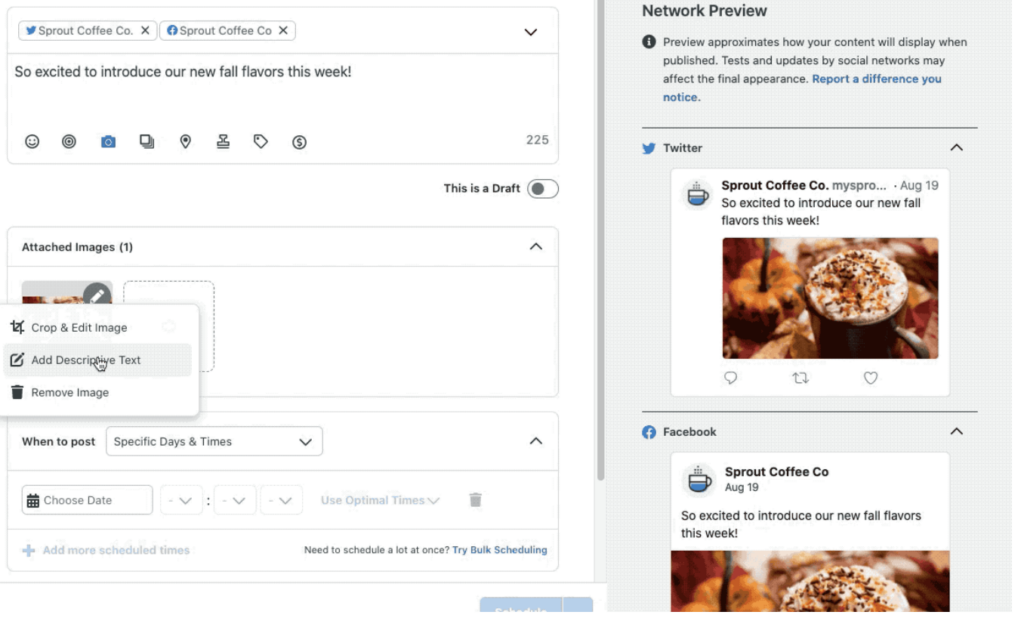Social Media Community Management: A Comprehensive Guide and guide to community management

What is Community Management Strategy?
Community management strategy refers to the process of creating, building, and maintaining online communities on social media platforms. This involves engaging with community members, setting community rules and guidelines, and employing various tactics to nurture a vibrant and interactive online community.
Understanding the Importance of Community Management
Effective community management is crucial for fostering trust and loyalty among community members, which can ultimately lead to increased brand advocacy and customer retention. It also provides valuable insights into the needs and preferences of the target audience, enabling businesses to tailor their products or services to meet these requirements.
Best Practices for Community Management Strategy
Community management best practices include establishing clear communication channels, actively listening to community feedback, promoting meaningful interactions, and upholding transparency and authenticity in all engagements with community members.
Choosing the Right Community Manager
Selecting the appropriate community manager is essential for the successful execution of a community management strategy. The community manager should possess strong communication skills, empathy, and a deep understanding of the brand and its community.
Social Media Community Management Best Practices
Engaging with community members effectively is a fundamental aspect of social media community management. It involves initiating and participating in conversations, addressing queries and concerns, acknowledging feedback, and expressing gratitude for community support.
Utilizing Social Listening Tools for Community Management
Social listening tools enable community managers to monitor conversations and sentiment around the brand or industry, identify emerging trends, and gather valuable feedback from community members. These insights are instrumental in shaping the community management strategy and addressing the evolving needs of the online community.
Implementing Analytics for Community Management
Analytics play a pivotal role in assessing the impact of community management efforts. By tracking engagement metrics, sentiment analysis, and demographic data, community managers can refine their strategies, optimize content, and measure the ROI of their community management initiatives.
Effective Social Media Management Tools for Community Management
Exploring social media management platforms provides community managers with a comprehensive set of tools for scheduling posts, monitoring interactions, and analyzing performance metrics across various social media channels. These platforms streamline the management of social media accounts and support efficient community engagement.
Selecting the Right Tools for Social Media Community Management
Choosing the appropriate social media management tools entails considering the specific needs and objectives of the community management strategy. It involves evaluating features such as social listening capabilities, workflow automation, audience targeting, and reporting functionalities.
Integrating Management Tools with Social Media Platforms
Integrating management tools with social media platforms allows community managers to seamlessly execute their community management tasks within the familiar interfaces of various social platforms. This integration enhances workflow efficiency and enables a cohesive approach to managing diverse social media channels.
Building a Successful Social Media Community
Identifying the types of community in social media, which may include support communities, interest-based communities, or advocacy communities, is essential for tailoring community management strategies to the specific characteristics and needs of each community type.
Strategies to Create and Grow a Social Media Community
Employing strategies such as establishing clear goals, nurturing meaningful relationships, creating valuable content, organizing community events, and incentivizing participation are imperative for initiating and sustaining the growth of a thriving social media community.
Utilizing Marketing Strategies for Community Growth
Integrating social media marketing tactics, such as targeted advertising, influencer partnerships, and content promotion, is crucial for expanding the reach and visibility of the community, attracting new members, and cultivating an engaged and active audience on social media.
The Role of Community Managers in Social Media
The key responsibilities of a community manager encompass fostering engagement, moderating community interactions, resolving conflicts, amplifying positive sentiments, and enforcing community guidelines to uphold a respectful and inclusive online environment.
Engaging and Managing Community Members
Community managers are responsible for maintaining open lines of communication, nurturing relationships with community members, acknowledging their contributions, and actively participating in conversations to foster a sense of belonging and camaraderie within the community.
Measuring the Impact of Community Management Efforts
Measuring the impact of community management efforts involves assessing engagement metrics, sentiment analysis, community growth, and the attainment of predefined objectives, enabling community managers to refine their strategies and showcase the value of their contributions to the organization.
5 social media community management best practices and tips
Brands stand to gain a lot by prioritizing community management in social media. That said, your approach has to be consistent to reap those benefits. It takes more than just a few likes and comments to create lifetime fans.
Use these five tactics to get the most out of your social media community management strategy.
1. Prepare to answer difficult questions
If you’re going to do community management, you have to do it all the way. That means engaging with it all—the good, the bad and the ugly.
Don’t worry. Engaging with a rogue hater doesn’t have to be stress-inducing if you don’t let it be. Oatly’s figured out how to make it fun.

“We try to be really responsive, no matter what,” says Perez. “We even have some fun with people who give us criticism. We know we won’t convince that person to love Oatly, but there’s also a chance someone else might see our response and think it’s funny.”
Maintaining this responsiveness means prepping your team to answer the hard questions. At Oatly, this looks like regular knowledge shares on issues relevant to their product and mission. “We get a lot of questions about niche ingredients, packaging, our commitment to sustainability—we’re given the resources needed to speak on all of it.”
2. Reward your superfans
As you grow your social media community, you’ll begin to notice some friendly faces. These are budding brand evangelists. Getting them to that stage requires some thoughtful engagement.
The first step is identifying your superfans. Look for people who drive community conversations forward by engaging with your social content: it might be someone that always tags themselves at your location on Instagram, or maybe they’re the first to comment on posts in your Facebook Group.

From there, show them your appreciation. Perez knows that even the simplest gifts can be a major relationship builder.
“We send out gifts all the time,” says Perez. “Coupons, stickers, handwritten notes—things like that make people feel like they really are a part of a community.”
3. Prioritize proactive engagement
Brands should strive for balance between the reactive and proactive elements of their social media community management strategy. One reinforces the strength of the community, and the other grows it in size.
If you look at the comment section of any viral TikTok, you’ll likely see a few brands chiming in.

This style of proactive marketing—an audience engagement strategy that leverages conversations around brands or industries that don’t explicitly mention a brand handle—is a masterful way to increase reach and expand your community. A top comment on a viral post gets a healthy fraction of all those impressions.
4. Establish a content creation feedback loop
Social media community managers may not be content creators, but that doesn’t mean the two roles don’t work closely together. In fact, Perez attributes much of Oatly’s TikTok success to the collaborative efforts between the two teams.

“We’re their eyes and ears,” says Perez. “We’re constantly passing along information we find to help inform content strategy. If we find a creator who’s an Oatly fan, we’ll pass their information over to our social team so they can kick off that relationship.”
This feedback loop strengthens both functions by democratizing insights so that both teams can act in lockstep. When creative teams, community and social media managers are aligned, the result is a more consistent brand experience for the fans on the other end of the message.
5. Empower your team with the right management tools
Social media is an ever-expanding frontier. Conversations about your brand or industry can—and will—pop up anywhere. If you want to keep up, you need to set your team up with community management tools.
Sprout Social is designed to handle the evolving needs of social media community management teams. Our platform offers a suite of tools designed to provide visibility into fan activity cross-network, including:
- The Smart Inbox: Unify your social channels into a single stream to monitor inbound messages, tags, keyword use and more.
- Social listening: Act faster on customer-informed engagement opportunities, whether your brand is directly mentioned or not.

- CRM Integrations: Link inbound messages to database contact profiles in Salesforce, Marketo or Microsoft Dynamics 365 to provide superior customer service.
2 social media community management examples from real brands
Thriving brand communities bring people together over a shared connection to a company’s mission, vision or goals. Learn how to translate your business needs into a thriving fan base with these three social media community management examples:
1. Texas A&M University
Texas A&M University is home to a large community of students, teachers, staff, parents and alumni. Some of these individuals still call College Station home, but many more have ventured beyond campus limits to start their post-grad lives.
There’s a ton to borrow from the Texas A&M playbook. But, if you’re going to replicate any of their successes, you’ve got to start with their approach to social media accessibility.
“Creating accessible content has been a priority of our team for several years, and things like including image descriptions are just part of our workflow,” says Krista Berend, Director of Social Media at Texas A&M.
By prioritizing accessibility, the Texas A&M social team creates an inclusive community that caters to all Aggies, no matter their physical or cognitive abilities. Berend and her team use Sprout Social to ensure their content creates an inclusive experience for all Aggies, not just some.
“With the software we were using before, we had to do all of that natively across social channels,” explains Berend. “With Sprout we can do all of that within the platform, which makes our workflow so much easier. Plus, as social channels add more accessibility features, we’ve noticed that Sprout almost immediately has those in the back end for us to use.”

2. Lyft
Lyft’s approach to social media community management is a consumer and marketer favorite, because they respond to everything—complaints, jokes, random anecdotes about Lyft experiences. If you mention their brand online (with or without a tag), chances are they’ll be in your replies shortly.
These efforts humanize the brand by reinforcing their voice. A quick scroll through the Replies tab of the Lyft Twitter account surfaces countless examples of the fun and irreverent personality they’re known for.
Cracking jokes and laughing alongside their fans gives them the brand authenticity needed to earn loyal fans in a crowded market.
Strengthen your community management strategy
A solid approach to social media community management can bolster organic reach, create brand ambassadors and further cement your brand’s personality in an authentic, human way.
To create audience connections that drive ROI, check out this guide to building a solid community management strategy. It’s filled with practical examples that will show you how to put everything you just read into action.





